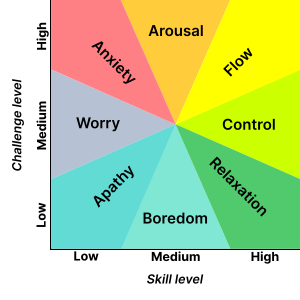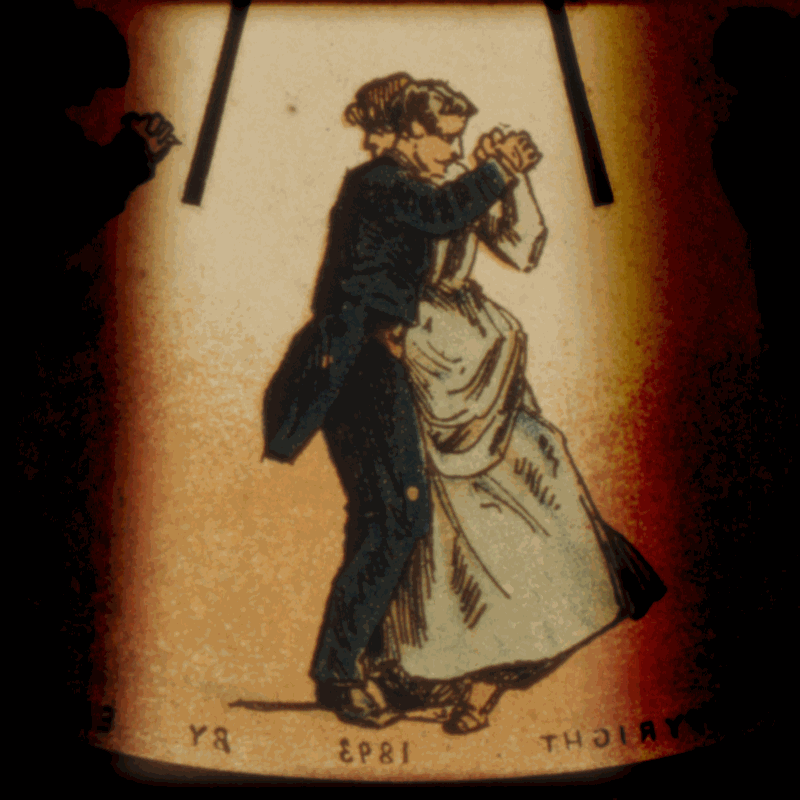
Mental state in terms of challenge level and skill level.[1] Clickable.
One of my calculus professors explained that we exhibit a range of emotional states from the highest, enthusiasm, to the lowest, apathy. Researching "apathy" on Wikipedia resulted in the graph above, which shows a two-dimensional plot of challenge vs skill. This isn't quite the same thing as the professor described, but very similar. It also reminds me of the Kübler-Ross model, commonly known as the five stages of grief.
The similarity certainly begins at "apathy", but the opposite in this model is "flow". (Each area in the graph contains a link to an article explaining it.) "Flow would be what is experienced when Tiger Woods golfs perfectly, or an artist creates a masterpiece, or a developer gets "deep into the code".
Another interesting aspect is that autotelic persons "may be better able to achieve flow than the average person". This article goes on to state that "Autotelic [2] is used to describe people who are internally driven, and as such may exhibit a sense of purpose and curiosity. This determination is an exclusive difference from being externally driven, where things such as comfort, money, power, or fame are the motivating force."





